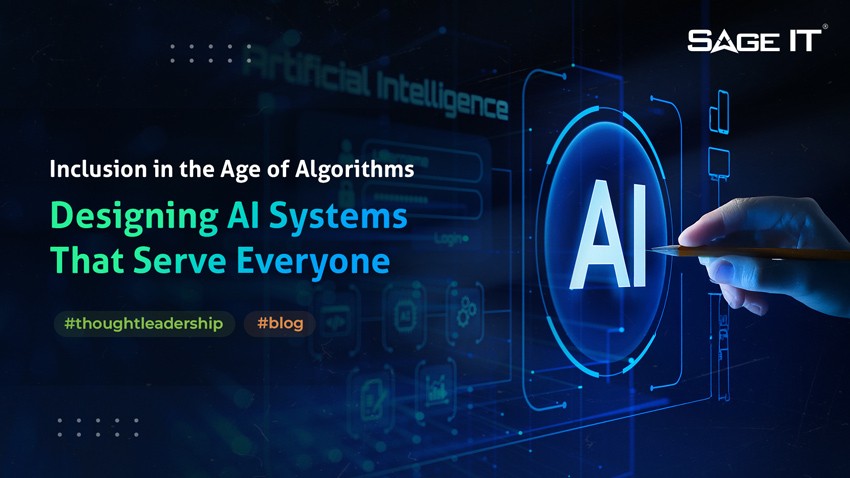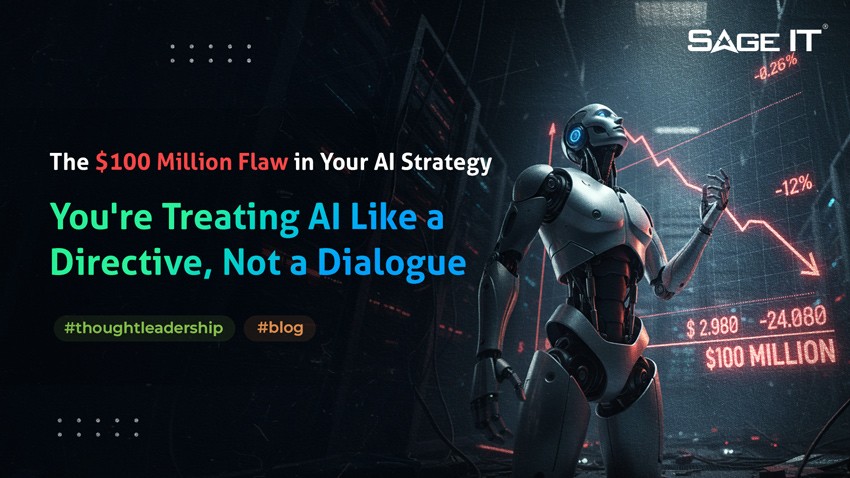“In the relentless pursuit of digital transformation, data has become the lifeblood of modern enterprises. However, many CEOs find themselves navigating a treacherous landscape where their information lies fragmented – scattered across incompatible systems and departmental silos. This fragmentation not only impedes the flow of insights but also throttles innovation, leaving businesses vulnerable in an increasingly competitive marketplace. The challenge lies not in amassing data, but in harnessing its potential through strategic cohesion. Understanding the pitfalls of data fragmentation and embracing data cohesion is the linchpin for future-ready enterprises – a critical differentiator for those seeking to thrive in the ever-evolving business world.
Data Fragmentation: The Hidden Threat Stifling Enterprise Growth
Imagine a global enterprise where critical information lies trapped in departmental silos – scattered across incompatible systems, outdated technologies, and conflicting processes. This fragmented reality mirrors the struggle many businesses face with their data landscape, hampering their ability to truly leverage information as a strategic weapon.
The implications of data fragmentation are severe. Decision-making becomes a labyrinthine process fueled by incomplete or contradictory insights. Operational efficiency plummets as teams unknowingly duplicate efforts and act on outdated information. Customer experiences become fragmented and impersonal.
Data Cohesion: The Key to Unlocking Strategic Advantage
Picture transforming your enterprise’s chaotic data landscape into a seamlessly integrated digital powerhouse – accessible with a few clicks, empowered by clear insights, and aligned with your core business goals. That’s the power of data cohesion: a unified approach that breaks down silos, standardizes processes, and transforms data into a strategic force multiplier.
Data cohesion transcends operational streamlining. It’s the foundation for outpacing the competition. Businesses that master data cohesion enjoy faster, more informed decision-making, radically improved efficiency, and elevated customer experiences.
The Path to Data Cohesion: A Strategic Roadmap
Achieving data cohesion isn’t about flipping a switch – it’s a strategic journey. Here’s the roadmap to guide your enterprise:
1. Strategic Assessment: Mapping Your Data Landscape
Begin with a comprehensive audit of your existing data ecosystem. This critical step uncovers fragmentation hotspots, pinpoints weaknesses in current data management, and aligns your data strategy with core business objectives. Focus on:
Data Governance: Establish robust standards for data quality, security, and compliance to ensure the integrity of your insights.
Seamless Integration: Design a blueprint for streamlining data flow across disparate systems, creating a unified data foundation.
Culture Shift: Promote data literacy at all levels. Foster a decision-making culture fueled by reliable, accessible information.
2. Executing the Vision: From Strategy to Action
Implementing data cohesion demands both technological prowess and organizational change management. Executive sponsorship is critical:
Technology as an Enabler: Invest in cloud-based data platforms for scalability, flexibility, and cutting-edge capabilities.
Building a Data-Savvy Workforce: Prioritize upskilling initiatives. Equip your employees with the tools and knowledge to unlock the power of data.
Proactive Change Management: Transparency is key. Communicate the vision, benefits, and potential challenges openly across the organization.
3. Metrics Matter: Quantifying Data-Driven Success
Data cohesion is an investment, and demonstrating ROI is vital. Select key metrics that resonate with your business goals, such as:
Accelerated Decision-Making: Track improvements in the time required to gather, analyze, and act on data-driven insights.
Boosted Operational Efficiency: Monitor enhancements in processes as diverse as supply chain management, customer service, or product development.
Elevated Customer Experience: Quantify improvements in customer satisfaction, loyalty, and retention.
Regularly measure these metrics to course-correct, celebrate wins, and demonstrate the transformative impact of data cohesion on your bottom line.
The CEO as Data Champion: Leading the Charge
The journey toward data cohesion demands a visionary at the helm – the CEO. It’s more than a rubber stamp; successful leaders actively shape a data-centric culture and turn information into a strategic weapon. CEOs must:
Set the Vision: Clearly articulate how data cohesion supports core business objectives, not just abstract IT improvements.
Allocate Resources: Prioritize investment in essential technologies like cloud platforms, analytics tools, and critically – in upskilling the workforce.
Evangelize Data Literacy: Walk the walk. Demonstrate a personal commitment to data-driven decision-making and encourage the same throughout the organization.
Staying Ahead of the Curve: Adaptability as an Advantage
In the dynamic digital landscape, the CEO’s role extends beyond the immediate transformation. Fostering a culture of continuous learning and agility is essential. This means:
Proactive Trend Spotting: Task teams with staying abreast of emerging data technologies (AI, predictive analytics, etc.) and their potential business implications.
Embracing Experimentation: Encourage a test-and-learn approach to new data methodologies, empowering teams to find innovative solutions.
Strategic Agility: Don’t let your data strategy stagnate. Regularly reassess it in light of market shifts and technological advancements.
The CEO who positions their enterprise as a data-driven leader doesn’t just future-proof operations – they build a culture primed for innovation and market disruption.
Conclusion: Data Cohesion – The Imperative for Future-Proofing Your Enterprise
Here’s your immediate checklist:
Assess and Align: Conduct a thorough audit of your existing data landscape. Critically examine areas of fragmentation and align your data strategy with core business goals.
Invest Strategically: Prioritize resources for the technologies, tools, and talent essential for building a cohesive data ecosystem.
Lead the Transformation: Champion data-driven decision-making at every level. Communicate, educate, and empower your workforce to embrace this shift.
Data cohesion is an investment with immense returns: adaptability, innovation, and a future-proof enterprise. The competitive landscape is unforgiving. Those who act decisively today will shape the business world of tomorrow.











